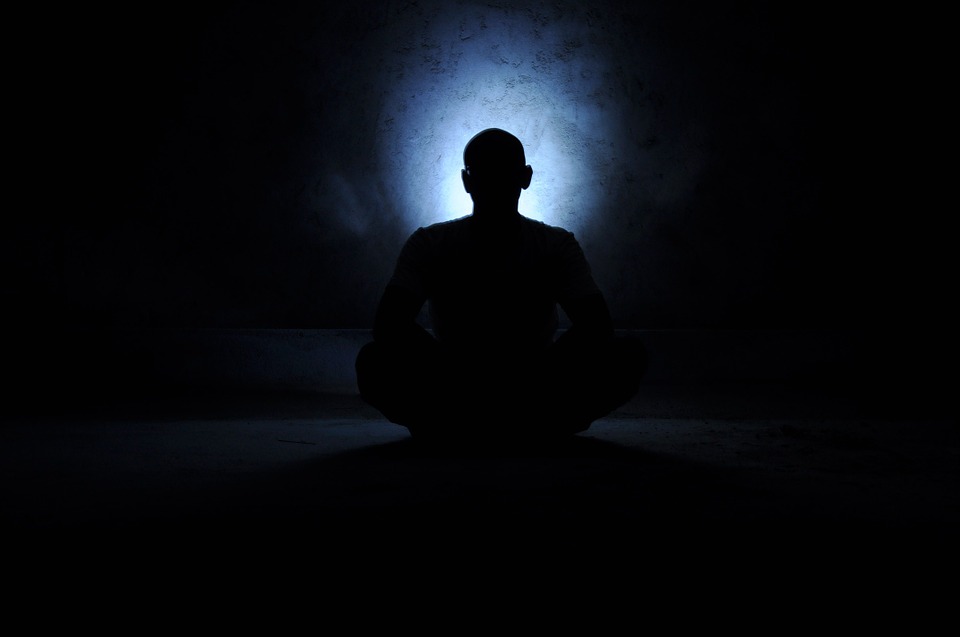
Deep sleep is so important for not only your body, but your mind. Here are 10 ways to get the best deep sleep possible:
Start Going to Bed Earlier
You’re going to bed too late each night. I get it though, there are too many distractions that can keep you up late.
First among all those is entertainment. The amount of programming through cable and streaming services could sink a battleship. It’s like there isn’t enough hours in the day to consume it all.
And let me tell you, there isn’t. When you combine this with the distraction of social media, you can find yourself still scrolling at 2 am.
You would be doing yourself a favor by putting off all those shows for another time and allow yourself to get to bed earlier. Trust me, those shows aren’t going anywhere and we’ve become content consumers, thinking it’s like an assignment to finish that next series on Netflix.
There is no assignment, those things are there for your enjoyment. So enjoy them on your on terms and don’t let them interfere with getting deep, consistent sleep.
Create a Wind Down Routine
This is key in getting deep sleep. Your body craves routine and responds favorably to it.
You want to create a wind down routine that you start at the same time each night and follow the order of. This wind down routine will allow your body to know that sleep is coming. This is going to allow you to fall asleep sooner and get that valuable deep sleep.
It doesn’t matter really what type of routine it is, but find out what works best for you and stick with it. It may be taking a shower and then reading or it may be some yoga and then listening to music. The key thing is that its important to create some structure for your body to help unwind with to eventually get that deep sleep.
Turn down the Light
Remember all that entertainment all around you? It may be seriously degrading your ability to get deep sleep.
We live in a 24/7 artificially lit world. As the sun sets, the opposite happens and your house springs into action. Lights are blaring, T.V’s are on, screens are being fully used. All this artificial light is disrupting your circadian rhythms and throwing off your ability to get deep sleep. The blue light emitted from electronics has the ability to prevent melatonin release from the brain which is crucial in your sleep cycles.
So turn off those electronics 1 to 2 hours beforehand and you’ll be surprised at the positive impact this can have.
If You Really Have to Use Those Electronics, Make Use of These Tools
There are going to be times when being on your laptop is required or you do have to use your phone. Fortunately, along with your modern technology, comes some ways to make them have a less harsh impact.
The first one is a tool for if you need to be on your lap top doing work. It’s called F.lux. This takes away that blue light from your lap top screen and gives it a more natural warm and orange glow. It can replicate the brightness all the way down to candle light and embers from a fire. Reducing the blue light is going to help you avoid the sleep disruption it causes.
I’m actually using it right now as I write this.
If you use an iPhone, you can switch on the night shift mode which also takes away from some of that harsh blue light. If you have to be up watching T.V, at least switch it into “movie” mode on your picture settings. Most T.V’s have “standard”, “dynamic”, and “movie” mode. Movie mode will give it a bit of warmer glow and cause less of that blue light disruption.
Keep Your Room Dark
This goes along with all this melatonin/blue light we’ve been talking about.
Just as blue light prevents your brain from secreting melatonin, darkness helps to produce it. When it gets dark, your body realizes the cycle of the day is ending and your sleep cycles should match up with that. Your sleep cycle involves this melatonin secretion so you want to help encourage it by keeping your room as dark as possible.
This can be tough in our modern world but your best friend in this situation are black out curtains. These are available most everywhere from Walmart to Amazon. They help to eliminate all that outside light to keep your environment as dark as possible. These are what hotels use and you may have noticed how dark those rooms can be compared to the amount of light that is usually prevalent outside.
Keep Your Room Cooler
Again, our modern environments create overly bright, overly warm living situations. This warmth is great but is not the most conducive to sleep.
Sure, warmth may make you drowsy but doesn’t promote that deep sleep you’re looking for. You want things to be a touch on the cool side to promote better sleep.
When you’re asleep, your body temperature actually drops and by creating a cool environment you can actually speed up the process of getting to sleep. Your body senses the coolness and can transition easier into sleep while also engaging in deeper sleep.
If you can control your room temperature, the sweet spot seems to be at around 5-10 degrees cooler than your average daytime temperature. At the very least, your sheets should feel cool to the touch, then you’ll know you’re in the right range.
You can check out a few more things you can do to improve your room in this article too:
Don’t Eat Too Much Before Bed
It’s hard to go to bed hungry and a little snack can be o.k, but you want to avoid heavy meals later in the night. This keeps your body up digesting and doesn’t allow you to naturally wind down and get that deep sleep.
Also, just the discomfort and bloating makes it tough to get settled. At the same time, your body can think it’s in the middle of the day as the focus appears to be on digestion and absorption as opposed to sleep. This can cause some more havoc with your body clock which hasn’t been allowed to naturally do it’s thing.
If you’re up all night eating and exposed to bright lights from screens, in your bodies mind, is like being outside in the middle of a bright sunny day. Sleep is the furthest thing from its mind in this situation and it doesn’t know the difference between it being noon or three in the morning.
Scenarios like this make the ability to fall asleep, and stay in deep sleep, extremely difficult. On the other hand though, here’s some things you do what to drink and eat to promote better sleep:
Check out What You’re Sleeping On
There’s a bit of a science to your bed and mattress and getting it just right is pretty crucial.
If you think about the majority of purchases in your life; house, car, schooling, etc your mattress needs to be right up there. Seems kind of ridiculous but it’s where you spend 1/3 of your life – or 1/2 of it if you have teenagers – so it should be considered a significant purchase.
The usual idea is going for the softest mattress possible. There are a lot of options for that now with memory foam mattresses and super soft mattress toppers. To get the best deep sleep possible, you’re going to want to go for more of a medium-firm one. The same way I like my steaks…
If you like the softer pillow top mattresses at least go for a firm mattress underneath for better support. A firmer support will give more support and cushioning to your spine and this is important for helping you sleep.
When things are too soft there is a lack of support for you spine and body and even slight movements can be disruptive to your sleep.
Watch out for the Caffeine
No surprise here that caffeine can keep you up but you might not know how long it can cause this to happen.
Caffeine can kick in around 10 to 20 minutes on average, and the noticeable effects can last for 2 to 3 hours in your body. If you over consume caffeine, it can take more and more of it to feel its effects to the point you’re injecting espresso.
It would seem to make sense that you want to cut caffeine out 2 to 3 hours before bed but this probably won’t do the trick. Caffeine has what’s called a “half-life” meaning its existence, and effects in the blood stream, can last longer. This half life can last around 5-6 hours,[3] so you might have to do some new math as to when it will be best to have your last coffee of the day.
Easy on the Alcohol
It seems like I’m taking all the fun away but caffeine and alcohol can really disrupt your sleeping patterns.
Alcohol may knock you out quick but it prevents you from getting that deep quality of sleep you are looking for. We’re looking at that body clock getting screwed up again with alcohol.
Alcohol turns on a brain pattern called “alpha activity”. This type of brain pattern doesn’t usually happen when you’re asleep but when you’re awake and alert. This now disrupts your circadian rhythms and in turn can block your REM sleep.[4]
Add this all up and you may pass out after all those Jager bombs but your body is not going to get any benefit or deep sleep from it. All you’ll have to show for it is the inevitable hangover the next day.
Sleep deeply by Meditation

In considering any meditation related to sleep, recognize that there’s nothing to force, and nothing to make happen. Since striving makes sleep more challenging, set out to practice without specific expectations or goals. We cannot make ourselves sleep, but perhaps, by aiming to stay settled and getting less caught up in our thoughts, we fall asleep anyway.
For the meditation that follows, there will be no ending bell or instruction. At the end, continue to practice if you like, or hopefully enjoy a good night’s rest instead.
- Start while lying down, allowing your legs to rest in a comfortable posture, hip-width apart. You can place your arms by your side or your hands on your belly.
- Begin by noticing your breath. Pay attention, as best as you’re able to the physical movement related to breathing, such as your belly rising and falling. Or, if you prefer, focus your attention more closely on the air moving in and out of your nose and mouth.
- It’s normal, expected even, to have thoughts — lots of them. Your mind rehashes the day or gets caught up in worrying about tomorrow. Recognize those habits, and then practice letting them be. Label whatever grabs your attention, and come back again to noticing the breath. Breathing in… and breathing out.
- Notice if you get caught up in effort, or frustration, or fear, with compassion for yourself. Catch thoughts of self-criticism or frustration, and come back to just one breath, one more time. Thoughts are only thoughts. Breathing in… breathing out. There’s nothing you need to fix or change right now in this moment. Notice where your thoughts go, and label them “thoughts.” Come back to one next breath, over, and over again.
- Shift attention to sensations in your body. Start by moving your awareness to physical sensations in your feet. You don’t need to wiggle your toes or move your feet, just notice them — the temperature or the pressure of your heel against the blanket or the mat beneath you.
- From your feet, move your attention into your lower legs, noticing whatever there is to see. Letting go of a sense of effort or needing to make anything happen. And then from your lower legs, through your knees, and into your upper legs. If you feel any sense of stress or tension, aim to relax and let go.
- Then through your buttocks and pelvis, and into your belly and abdomen. You might notice a sense of your breath moving up and down, or other physical sensations, or sometimes even reflection of emotion (perhaps an emotion like fear or anger reflects in the stomach in the form of tension or tightness). And as you move from your belly and now into your chest, note each time your mind gets caught up in thoughts of discomfort or distraction. And then gently and with patience, guiding it back one more time.
- Move around into your back, certainly a place many of us hold tension in different ways, relaxing your muscles as best as you’re able, lowering your shoulders from your ears. If you feel a need to make an adjustment, allow that to happen with intention, pausing and choosing your next action. Shift your attention into your hands and lower arms, again without actively needing to move or change anything, observing and letting go.
- Then moving through your neck and into the muscles of your face, perhaps noticing any locations of tightness or pinching, and then with gentleness, as best as you’re able, relaxing those muscles. And then for a few moments, have a general awareness of physical sensations throughout your body.
- And now, if you’re still awake, bring your attention back to the breath, each time the mind wanders into the past or into the future, or wherever it chooses to go. If it’s a useful anchor for your attention, you can count breaths, breathing in, one, breathing out, one, breathing in, two, breathing out, two… When you reach ten, start at one again.
- If counting becomes a distraction, then just stay with the sensation of breathing — wherever you feel the breath entering or leaving your body, or the rising or falling of your belly and chest. Continue on your own now, counting breaths up to ten, patiently returning your attention whenever you become distracted. If you lose track of counting, that’s fine. Start over wherever you last remember.

